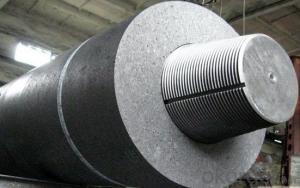Graphite electrodes, the unsung heroes of the metallurgical world, are the backbone of many industrial processes. They are the silent workhorses that power the furnaces and reactors, enabling the production of everything from steel to aluminum. But what exactly are graphite electrodes, and why are they so important? Let’s dive into the fascinating world of graphite and explore the different types of electrodes and their uses.
First and foremost, graphite electrodes are made from pure, high-quality graphite. They are known for their excellent electrical conductivity, thermal shock resistance, and chemical stability. These properties make them ideal for use in electric arc furnaces (EAFs) and other high-temperature applications.
There are several types of graphite electrodes, each with its own unique characteristics and applications. Let’s take a closer look at some of the most common types:
1. Standard Graphite Electrodes: These are the workhorses of the graphite electrode world. They are made from a blend of needle coke and coal tar pitch, providing a balance of cost and performance. Standard electrodes are used in a wide range of applications, including steel production, foundries, and non-ferrous metal melting.
2. High Power Graphite Electrodes: As the name suggests, these electrodes are designed for high power applications. They offer improved electrical conductivity and thermal shock resistance compared to standard electrodes. High power electrodes are used in electric arc furnaces for steel production, where high temperatures and intense electrical currents are the norm.
3. Ultra High Power Graphite Electrodes (UHP): The crème de la crème of graphite electrodes, UHP electrodes are made from a higher grade of needle coke and have even better electrical conductivity and thermal shock resistance. They are used in the most demanding applications, such as the production of high-quality steel and the melting of non-ferrous metals.
4. Graphitized Electrodes: These electrodes are treated with a special process that increases their density and purity. Graphitized electrodes have superior electrical conductivity and are used in applications that require high precision, such as the production of titanium and zirconium.
5. Impregnated Graphite Electrodes: To further enhance their performance, some graphite electrodes are impregnated with materials like resin or pitch. This process improves their mechanical strength and resistance to erosion, making them suitable for use in more aggressive environments.
But why are graphite electrodes so important? Let’s consider a few reasons:
– Cost-Effectiveness: Graphite electrodes are relatively inexpensive compared to other electrode materials, making them an attractive option for many industries.
– Energy Efficiency: Due to their excellent electrical conductivity, graphite electrodes can help reduce energy consumption in industrial processes.
– Environmental Benefits: Graphite electrodes produce fewer emissions and pollutants compared to other electrode materials, making them a more environmentally friendly choice.
– Versatility: With a range of types available, graphite electrodes can be tailored to meet the specific needs of various applications.
In conclusion, graphite electrodes play a vital role in many industrial processes. From steel production to the melting of non-ferrous metals, these versatile and reliable components are essential for the efficient and sustainable operation of many industries. So next time you see a furnace or reactor in action, remember the humble graphite electrode, the unsung hero that makes it all possible.

